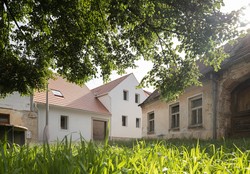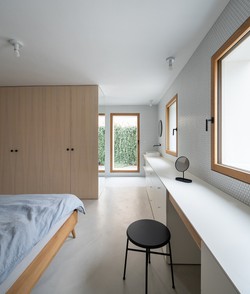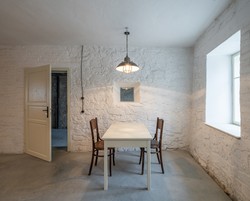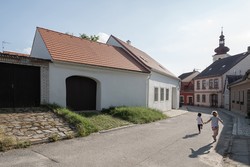
Photo: Alex Shoots Buildings
New Architecture / Piranesi 44/45
Kozina House
Atelier 111 architekti
A Meditation on Space and Place
by Jana Tichá
Architects Jiří Weinzettl and Barbora Weinzettlová constructed their new home in the densely-built historic center of a small town by connecting three neighboring houses with small courtyards.
Photographs of the Kozina House don’t lie, but they don’t tell the entire truth. The house truly is as beautiful as it looks and all its details are so thoughtfully and carefully executed that they nearly overshadow the project’s main achievement – the fact that it has awakened the site’s genius loci by opening up and making visible the spatial relations within the ancient, established urban fabric.
Even if it managed to produce the most beautiful image possible, photography is still a static medium incapable of mediating the direct experience we get of a space by moving through it. Only this movement reveals the true scale of a space, acquired by confronting our body with its boundaries. Space is thus a question of not three, but four dimensions: In order to truly perceive it, we need time to let it unfold before us… but also behind us and above us – all around us, in fact. Only this movement reveals the character of a space, the specific spatial constellations that we usually call “place.” And yet, a place is much more than a three-dimensional field. Nor is it defined by the abstract geometric relationships constructed by our mind, meaning above all the concrete and phenomenal relationship perceived and experienced by all our being. Our perception of a place is done first and foremost by our senses – not just the usual senses of sight, sound, touch, or smell, but also our sense for balance and our sense of orientation. These sensory perceptions are joined by the emotions that these perceptions arouse within us, the memories they evoke, and the various associations and ideas that all determine how we feel in a particular place. A place, therefore, is not a rational construct that can be deduced and planned through logic; it can only be created using the same complex resources by which we perceive it.
The complete article is published in Winter 2021 issue of Piranesi No. 44-45/Vol. 29.







